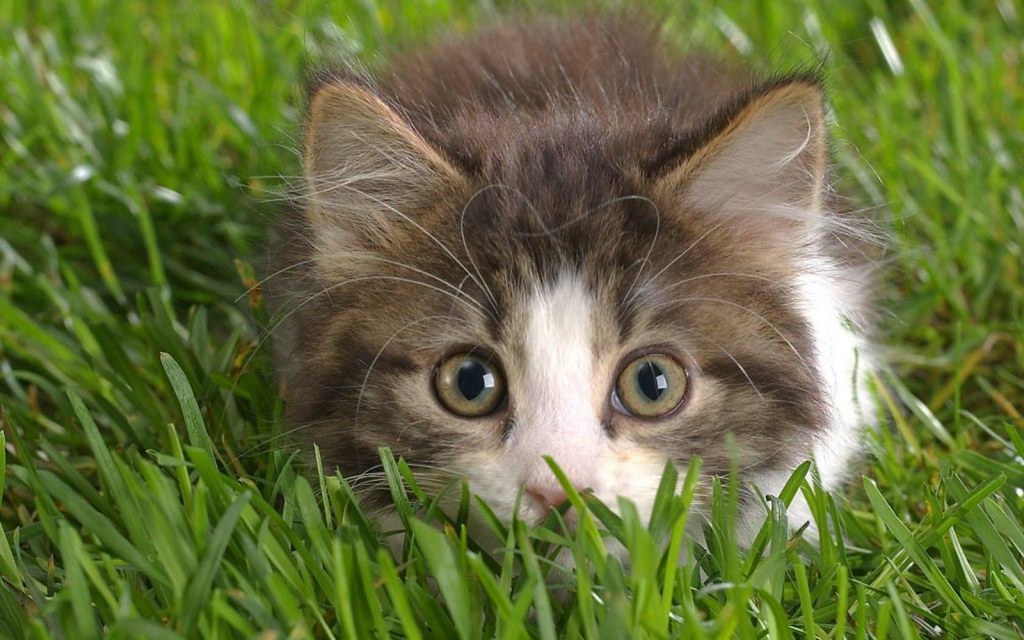Man was appointed by God to have dominion over the beasts, and everything a man does to an animal is either a lawful exercise, or a sacrilegious abuse, of an authority by Divine right. ~C.S. Lewis
As long as there have been humans, there have been pets. Countless numbers of dogs, cats, birds, lizards, and fish have had a place in our homes, our hearts, and our history over the centuries. Let’s take a look at some of those pets that influenced people beyond their human slaves masters.
Thomas Jefferson’s Grizzly Bear Cubs
In 1807, Capt. Zebulon Pike sent two bear cubs as a gift to President Thomas Jefferson. Bears were not unheard-of in Jefferson’s Virginia, but these were not just any bears–they were grizzlies from the wild, wild American West. Lewis & Clark had already told the president how huge and ferocious these western grizzlies could get. So, Jefferson did what most of us do when we don’t have the receipt–he regifted the cubs.
His friend Charles Peale ran a natural history museum in Philadelphia–the first such museum in America, in fact. After a short stay in the White House, the bears were moved to Philadelphia. The outcome was pretty much what you’d expect in a time before animal rights and workplace safety concerns. The bears grew big and strong, until one of them reportedly pulled a Night of the Museum and broke free. The bear was shot dead. Both were stuffed and mounted to turn them into more cooperative museum displays.
Dead or alive, the bears gave Americans some of the earliest impressions of the faraway West and its lore. Unfortunately, the bears’ current whereabouts are unknown. After Peale’s death, his sons sold off some museum artifacts and the Peale museum was moved to Maryland before shutting down in 1997.
Dookie the Corgi
One of the oldest types of herding dogs, the lineage of the Pembroke Welsh Corgi goes all the way back to 1107 AD, supposedly brought to Wales by Vikings. In recent decades, however, they’ve become most well known for their association with the British royal family. It’s hard to imagine Her Royal Highness Queen Elizabeth II without her loyal brood of Pembroke Welsh Corgis, and it’s all thanks to Dookie.
The first royal corgi received the name Dookie, an unfortunate bastardization of “Duke,” because he was intended for the Duke of York, who became King George VI. After Elizabeth and her sister Margaret admired the corgis that belonged to the Marquess of Bath, they got Dookie in 1933. Thus began a lifelong love of the breed for the princess-turned-queen, to the point that corgis are a strong element in Elizabeth II’s public image.
Virgil’s Fly
It may be a stretch to call it a “pet,” but the legend of the Roman poet Publius Vergilius Maro and his fly is an interesting case of using government loopholes. The Roman government was confiscating the properties of wealthy citizens and redistributing it to war veterans. However, if the land held a burial site like a mausoleum, it was spared from seizure. Virgil kept his property, then, by constructing a mausoleum and holding an elaborate funeral for the dearly departed insect.
The main source of this story, however, is the 1957 Ripley’s Wonder Book of Strange Facts, which may not be the most reliable source. The story also may have evolved from Suetonius’ “Life of Virgil,” in which he stated that the poet wrote the story of the shepherd Culex. The young man was napping when he was stung by a gnat, which woke him up and alerted him to the presence of a venomous snake nearby. Culex squashed the gnat as well as the snake, but honored the insect’s warning with a proper burial in a tomb.
Tibbles the Exterminator Cat
Many animal experts argue that pet cats should be kept solely indoors, and for good reason. Besides being at greater risk of disease, attacks from wild animals like coyotes and eagles, or death by speeding car, house cats also can cause tremendous damage to the ecosystem. Cat slaves owners who think their one kitty doesn’t make much of an impact should read up on Tibbles in New Zealand.
The story goes that the keeper of a new lighthouse moved to New Zealand’s Stephens Island in 1894. He brought his cat, Tibbles, along with him. Like many other cats, Tibbles brought his human dead animals, often in the form of a bird known as the Stephens Island wren. This small, flightless bird was once widespread in New Zealand, but its territory had shrunk to only Stephens Island. Eventually, Tibbles stopped bringing home wrens. Collectors and scientists came to the island in search of the birds, but found none. It went extinct around 1895.
Experts do argue that Tibbles was not solely responsible for the wren’s extinction. However, it’s pretty clear that Tibbles didn’t exactly help them survive. The multiple feral cats that had entered and reproduced on the island likely encouraged the disappearance of the wren. Tibbles’ story is not only a good example of why you should keep your kitties inside, but spay and neuter them as well!






